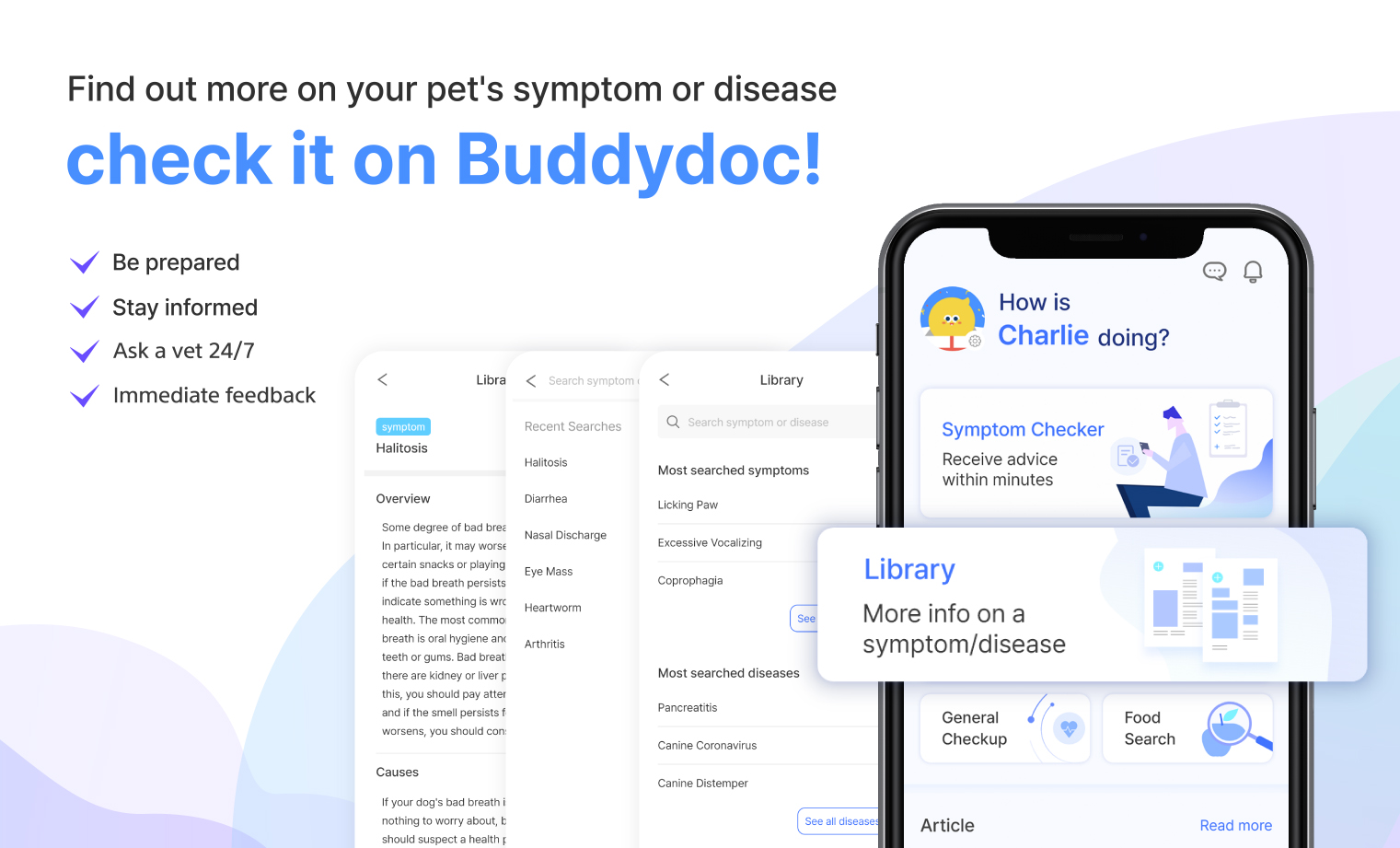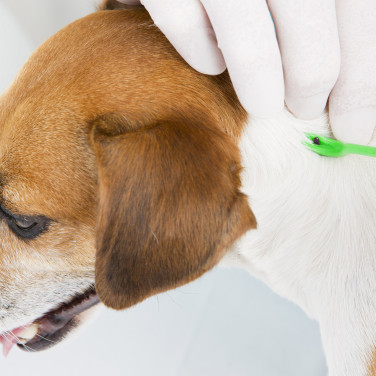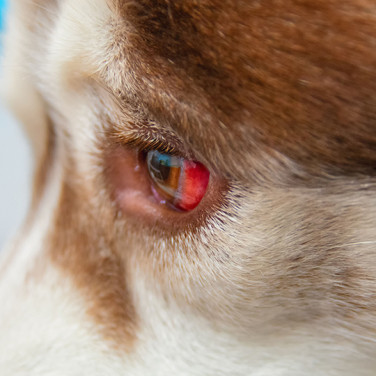DISEASES
Oral Tumors in Dogs - Causes, Signs, and Treatments
페이지 정보
본문

What are Oral Tumors in Dogs?
Oral tumors are abnormal growths that occur within the mouth. The lumps you may find in a dog's mouth are divided into benign and malignant tumors. Generally, benign oral tumors will grow slowly and locally, but malignant tumors will multiply and spread to the other tissue. Depending on the type of tumor affecting a dog, the spread rate reaches up to 80%. If an oral tumor is present, symptoms such as bad breath, drooling, and pain may appear together, and it is typically treated through surgical removal.
The Main Causes of Oral Tumors in Dogs
The cause of tumors in dogs does not have a clear-cut answer, but it is reported that a combination of risk factors does play a part in dogs that develop tumors. These factors include environmental, genetic, age, and gender.
Below is a list of common benign oral tumors that occur in dogs:
-
Gingivitis (Epulis)
The most common benign oral tumor arises from the periodontal ligament, a small tissue that connects teeth to the surrounding bone. They are harmless unless the location of the epulis begins to cause bad breath, drooling, difficulty chewing, or a reluctance to play or catch toys. Surgical removal is available, but there is a possibility of recurrence.
-
Peripheral odontogenic fibroma
The most commonly found benign oral tumor is a solid mass containing gingival tissue adjacent to the teeth. It is not metastatic but can be quite extensive.
-
Acanthomatous ameloblastoma
Unlike general benign tumors, it is highly invasive to local tissues, including bone. Although not metastatic, it has a locally aggressive character and causes severe pain in the jaw.
In general, benign tumors are not a big problem when surgically removed, but there is a possibility of recurrence.
This is a list of some common malignant oral tumors that occur in dogs:
-
Melanoma
Oral melanoma is an abnormal growth of melanocytes, a skin cell that produces pigment. This oral mass is a malignant tumor, usually black or dark in color, but some may not appear dark. Oral melanoma is one of the most common oral tumors found in dogs and can be very aggressive due to its high probability of spreading to other parts of the body.
-
Squamous cell carcinoma
It is a malignant tumor arising from the skin's epidermal cells and is known to occur commonly in oral tumors in dogs. It affects the gums, mouth, and tonsils, most often locally. Severe pain may be observed if the bone is invaded.
-
Fibrosarcoma
It is a tumor that arises from the fibrous tissue of the oral cavity and mainly has local invasion. Although the possibility of metastasis is low, it is known that metastasis can occur in about 30% of cases.
What are the Signs and Symptoms of Oral Tumors in Dogs?
Oral tumors can cause various symptoms in dogs depending on location, type, size, and rate of spread. Oral pain is common with oral growth in dogs due to pressure the tumor may put on the underlying bone. Signs of pain to look for are excessive drooling while eating, not biting down on its toys, or avoiding touching its face. A severe sign of pain will cause panting in dogs.
The following are other common signs of oral tumors in dogs:
- Bad Breath
- Loosening or loss of teeth
- Loss of appetite
- Facial swelling
- Bleeding
How Dangerous Are Oral Tumors in Dogs?
Oral tumors do not go away independently and, depending on the malignancy, can spread rapidly without treatment. If the growth does not increase in size, it is usually fine, but it does not necessarily mean it is not a benign tumor. If the tumor is black, there is a possibility that it is a malignant tumor (melanoma), which requires a visit to diagnose and treat it immediately. Likewise, if there is pain, ulceration, or bleeding in the oral cavity, it begins to multiply within a short time, or if it interferes with the surrounding oral structures, visit a hospital for appropriate treatment. In addition, if symptoms such as loss of appetite, bad breath, shaking teeth, and drooling appear with an oral tumor, proper management through a veterinarian is required.
How to Deal with a Dog’s Oral Tumor at Home?
If you find an oral tumor in your dog, keeping the area clean around it is essential. Periodically, check the tumor area to see if it grows rapidly, changes color, or causes pain. If any of the above symptoms and signs coincide, visit a hospital for an examination and treatment.
How is Oral Tumor Diagnosed in Dogs?
Since alopecia has various causes, it is best to come prepared for a visit to a vet. Generally, a veterinarian will ask to disclose the patient's medical history (vaccine, disease, etc.), the severity of symptoms (itching, pain, etc.), diet, and lifestyle. In the case of alopecia, a vet may also ask whether there is another pet at home and the presence of any environmental stress.
A veterinarian may first ask preliminary questions about when the tumor first appeared, how it grew, where it was located, and whether any other symptoms accompanied it. According to the answers provided, a veterinarian will perform specific tests to diagnose the tumor. If a malignant tumor is suspected, additional tests are needed because it may have spread to other organs in the body.
The following tests may be performed to diagnose oral tumors in dogs accurately:
-
Physical examination
A physical examination can confirm the presence of abnormalities in the oral cavity, as well as rule out other possible problems that may be present.
-
Blood test
Blood tests help evaluate changes in blood cell counts caused by tumors and damage to other organs.
-
Oral radiographs and ultrasound
Radiographs and ultrasounds can help to identify which type of tumor is present and evaluate how much the tumor has grown and whether it has spread to other organs.
-
Cytology test (FNA)
A fine needle aspiration test accurately diagnoses oral tumors using a microscope to examine a tumor tissue sample. A biopsy surgery may be required if the results remain unclear after an FNA examination.
-
Histological test (Biopsy)
A biopsy may be performed under sedation to extract pieces of the tumor and sent to a laboratory to be examined by a veterinary pathologist.
-
CT scan
It is an important test to precisely evaluate the spread and growth rate to evaluate the best course of treatment.
How is an Oral Tumor Treated in Dogs?
After diagnosing the type of tumor affecting your dog’s health, a veterinarian will proceed with any of the following treatments.
This is a list of treatments that are practiced to help treat oral tumors in dogs:
-
Surgery
Oral tumors are usually treated by surgical removal. Depending on the type and extent of the spreading, it may be necessary to remove parts of the affected tissue, bone, or lymph nodes to remove the presence of any tumor completely. In addition, if the surrounding lymph nodes are enlarged, removal of the lymph nodes under the veterinarian's judgment may be recommended to prevent further spreading. After removal, the prognosis is evaluated through a biopsy, and depending on the type of tumor, a second operation may be required, or chemotherapy and radiation therapy may be administered. Pain management and a feeding tube placement may be required if the patient feels severe pain and has difficulty eating.
-
Radiation therapy
Some tumors are too large to be excised entirely, so they are treated with radiation therapy to shrink them to an operable size.
-
Chemotherapy
Chemotherapy may be used for patients with inoperable tumors or more aggressive tumors for which radiation therapy is not applicable.
-
Immunotherapy
In the case of melanoma, a vaccine exists and can be used as immunotherapy.
How to Prevent Oral Tumors in Dogs
There are no preventive measures for oral tumors. Early detection and treatment of oral tumors are important, so it is recommended to check the inside of the oral cavity and brush your dog’s teeth daily. Keeping the area around the tumor clean is important, as you can prevent secondary infection. Regular dental checkups at the veterinary clinic can help detect abnormalities you may not catch.
Find out more about your dog’s disease or symptoms in the Buddydoc Library!

The Buddydoc library is filled with everything you’d want to know about each symptom and disease your pet may experience. If you would like to find out more about the causes, signs, treatments, preventions, and more for your dog’s disease. Try out the Buddydoc app and search your pet’s symptom or disease in the Buddydoc library.













